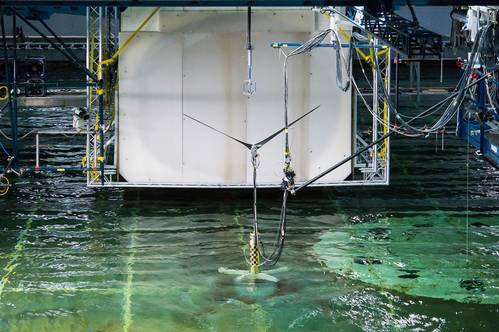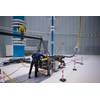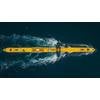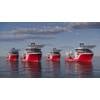Offshore Wind Floating TLP Model Tests Complete
US-based Glosten Associates (Glosten) announce that the 3-week scale-model testing of the PelaStar tension-leg platform (TLP) has been completed.
The three-week test program was conducted in support of the Offshore Wind Floating Platform Demonstration Project FEED Study awarded to Glosten by Energy Technologies Institute (ETI). The test results are being used to further demonstrate PelaStar’s technical feasibility and to calibrate state-of-the-art software used to design, analyze, and optimize the floating wind turbine system.
The 1:50-scale floating wind turbine model was tested in the world class offshore basin at the Maritime Research Institute Netherlands (MARIN). For this test, the PelaStar TLP was optimized for MARIN’s in-house test turbine, which models a 5MW turbine with a 126-meter rotor diameter.
The test model design was based on a full- scale platform designed in accordance with the new DNV standard for floating wind turbine structures (DNV-OS-J103) and optimized for the MARIN turbine. The simulated full-scale offshore conditions are representative of UK Round 3 conditions, and are characterized by a 55-meter water-depth, a 7.5-meter tide range, and an extreme significant wave height of 8.2 meters.
“We are excited about reaching this important milestone, advancing our technology, on schedule. When we complete the ETI FEED project by the end of the year we will be well positioned to execute the next phase of the project: building and installing the full scale 6MW floating turbine,” William Hurley, PelaStar Director and Glosten program lead, commented.
Andrew Scott, Programme Manager, Offshore Wind at ETI said: “Offshore wind must be affordable and cost competitive with alternative generation technologies. The ability of large floating turbines to access near-to-shore, high wind speed sites off the coast of the UK and elsewhere in the world could bring down the cost of electricity generation for the long term, helping to ensure that low carbon energy from offshore wind achieves costs comparable with other forms of low carbon generation. Our modelling and completed engineering design projects have shown that floating offshore wind farms could play a key role in providing affordable, secure and sustainable energy for the UK as part of a broader and balanced energy system.”
www. glosten.com














 December 2025
December 2025



